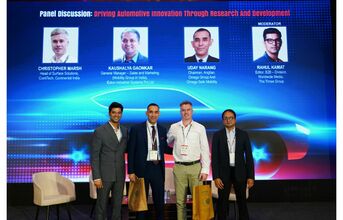
He mentioned that even during economic recessions or cost-cutting measures, R&D remains a protected area and is typically the last to face compromise.
Kaushalya pointed out that in tier 2 and tier 3, the percentage allocated to research R&D is relatively small. In comparison, Europe dedicates more than 5-6 per cent of spending to sales, and the Americans typically allocate 3-4 per cent. Despite this, Kaushalya noted that Indian OEMs are performing well. However, he raised the example of R&D activities appearing to occur in the U.S., while the funds are actually spent and debited from India. To address this, Kaushalya highlighted that Eaton has six global innovation centres, with the India centre leading the way.
Christopher mentioned that the proficiency of Indians in English serves as a compelling selling point from the customer's perspective. He noted that India possesses abundant resources, well-trained individuals, both in terms of brainpower and manpower. The advantage of being able to communicate in a widely spoken international language attracts business from numerous countries around the world.
In terms of consumer demand, Narang acknowledged that there is consumer demand in tiers 2, 3, and 4, with people in these segments having knowledge about EVs and their latest technological offerings. He stressed the importance of understanding the educated customer base and highlighted the necessity to build products for rural India to truly fulfil the nation's aspirations at scale.
Kaushalya also concurred that Indian customers are educated, inquisitive, and prone to questioning what they don't agree with. He noted a shift in consumer behaviour, and in the process of designing products, they consistently consider the readiness levels—whether it's the readiness of the technology, the engineer, or the customer. Kaushalya emphasised the interdependence of these three elements, stating that unless they align, achieving success is challenging.
Chris wrapped up the discussion by emphasising the importance of ‘customer centricity.' He highlighted that every customer is unique, especially in a dynamic market like India, and it is crucial to provide precisely what the customer desires.



























